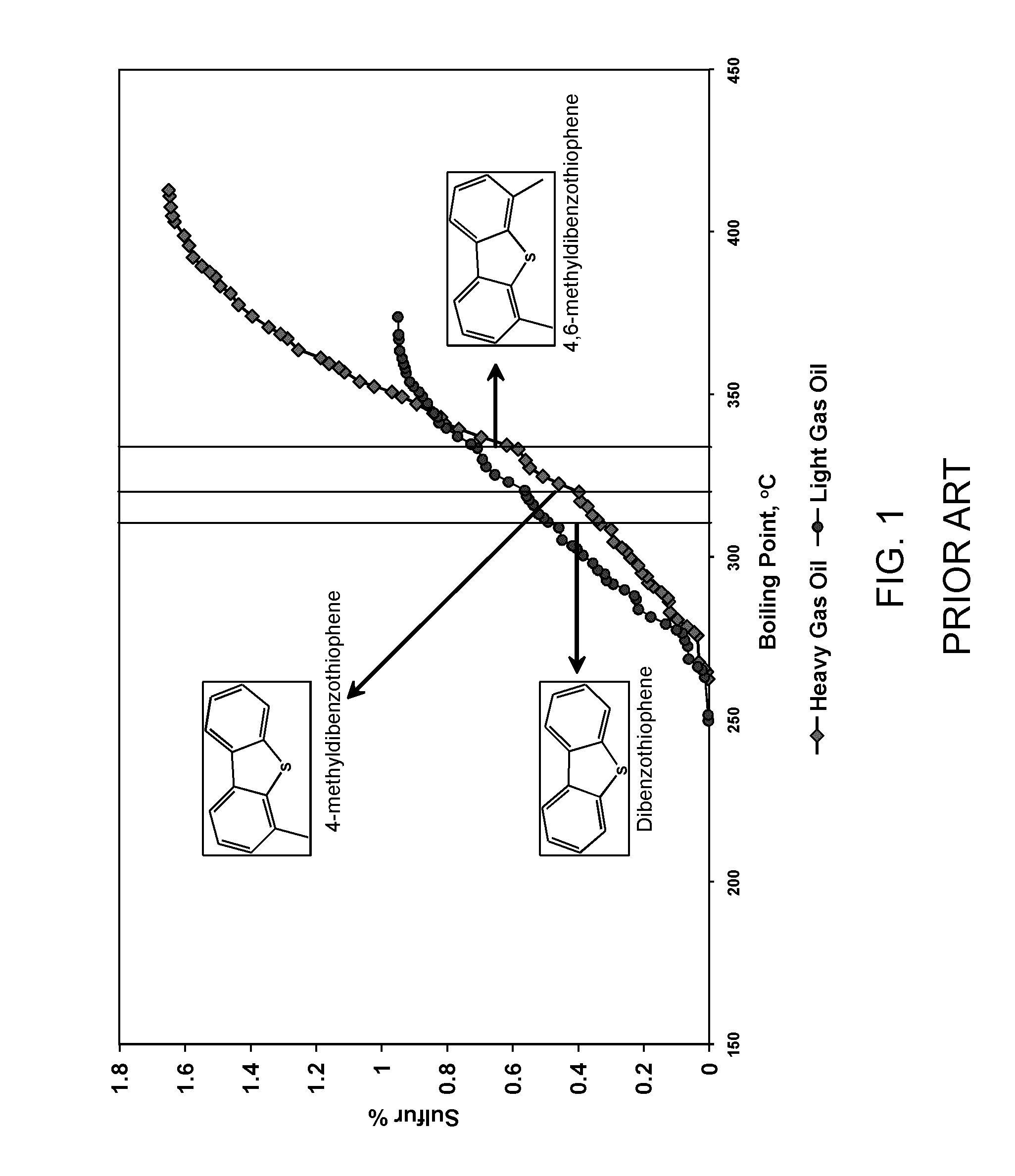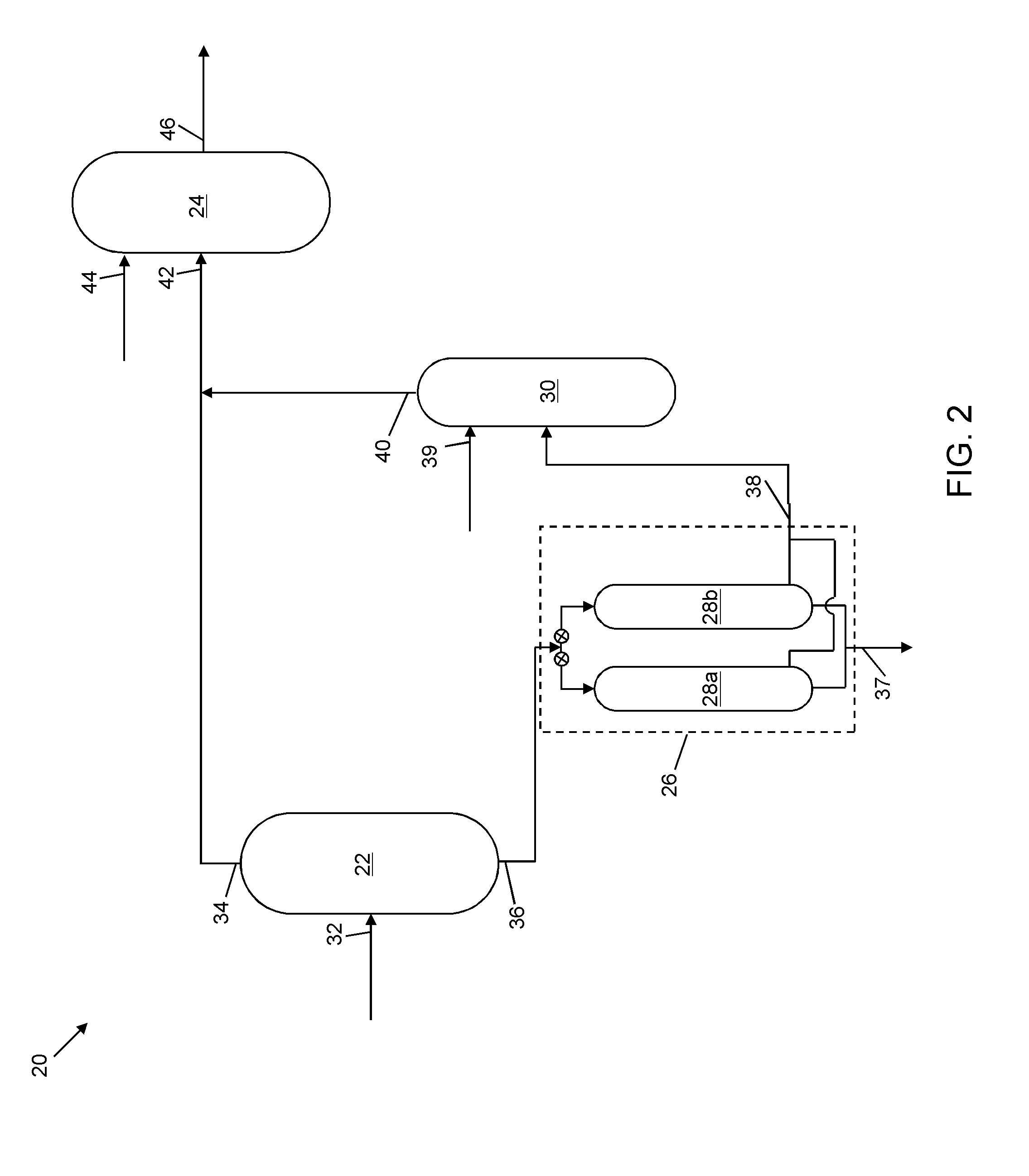Integrated Isomerization and Hydrotreating Process
- Summary
- Abstract
- Description
- Claims
- Application Information
AI Technical Summary
Benefits of technology
Problems solved by technology
Method used
Image
Examples
example
[0073]A gas oil was fractionated in an atmospheric distillation column to divide the gas oil into two fractions: a light gas oil fraction (LGO) that generally contains compounds having their boiling points below 340° C., 92.6 W % yield, and a heavy gas oil fraction (HGO) that generally contains compounds having their boiling points above 340° C., 7.4 W % yield. The properties of gas oil and its fractions are given in Table 3:
TABLE 3LightHeavyGas OilGas OilGas OilPropertyUnitMethod(GO)(LGO)(HGO)Yield10092.67.4SulfurW %D-42940.720.6251.9Densityg / ccD-40520.820.8140.885NitrogenppmwD-4629363196Cetane IndexD-97654.1Cetane NumberD-61353.3Cloud Point° C.D-5773−2212Flash Point° C.D-9345.5190Pour Point° C.D-5773−24.48.9 0%° C.D-28874894304 5%° C.D-2887138150332 10%° C.D-2887166173338 30%° C.D-2887218217347 50%° C.D-2887253244355 70%° C.D-2887282272363 90%° C.D-2887317313379 95%° C.D-2887360324389100%° C.D-2887371343416Viscosity @ 25° C.cStD-70422.2951.192Viscosity @ 50° C.cStD-70421.5267.047
[...
PUM
 Login to View More
Login to View More Abstract
Description
Claims
Application Information
 Login to View More
Login to View More - R&D
- Intellectual Property
- Life Sciences
- Materials
- Tech Scout
- Unparalleled Data Quality
- Higher Quality Content
- 60% Fewer Hallucinations
Browse by: Latest US Patents, China's latest patents, Technical Efficacy Thesaurus, Application Domain, Technology Topic, Popular Technical Reports.
© 2025 PatSnap. All rights reserved.Legal|Privacy policy|Modern Slavery Act Transparency Statement|Sitemap|About US| Contact US: help@patsnap.com



